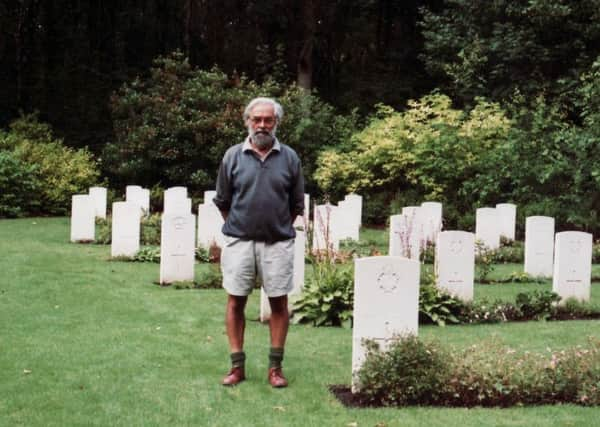Nature’s healing power is more than a cliche


Today a century later it all looks nice and peaceful, with a dense canopy of oaks and aspens and honeysuckle either side of the several small clearings in which I am standing in the photo.
Father was here in November 1914, three months after the outbreak of the First World War, a soldier in the London Rifle Brigade. He had posted his last postcard to his mother as he passed through Chichester on the troop train en route to embarkation in Southampton.
Advertisement
Hide AdAdvertisement
Hide AdFor the next two months he was almost daily up to his knees in mud in this wood which was gradually being dismembered by artillery shells and rifle bullets until it resembled a porcupine going bald.
Fortunately he had been a Boy Scout back in peaceful old England in those palmy days of Empire. He made tiny twig fires to keep warm and heat the billycans of tea whenever that was possible in this territory of the sniper. For the rest of his life he made just such a tiny fire every day for comfort wherever he was, even if this was a brief stop on a walk over Dartmoor or the Sussex Downs.
Plugstreet Wood was smashed to pieces eventually. It was from here that he walked out on Christmas Eve 1914 to meet the enemy a hundred yards away and shake hands and exchange little gifts. Having seen all my life what this place looked like in Imperial War Museum photographs I did not know what to expect a century later. Obviously different.
But the cliché ‘Nature’s healing power’ was made real for me when I saw this very verdant, healthy wood down in the dip below the road and beyond the field of wheat. A chiffchaff was hunting among the willows for insects as I walked down the track. The honeysuckle smelt wonderful when I came into the damp woodland.
Advertisement
Hide AdAdvertisement
Hide AdIt made me look for white admiral butterflies as the time was right and this magnificent butterfly feeds as a caterpillar on the leaves of honeysuckle just as they do in Sussex. Sure enough they were flying about under the oak canopy in the shafts of sunlight.
But the grave stones and the uneven ground in the depths of the wood made it easy enough to imagine what it had gone through a century before. Father was invalided out on 15 January with severe dysentery and trench feet but after recuperation returned as Transport Officer in the Machine Gun Corps in 1917 with another return to the front line in 1918.
Thankfully the snipers missed him again though his driver was blown to pieces next to him by an exploding shell one night, his horse with him.